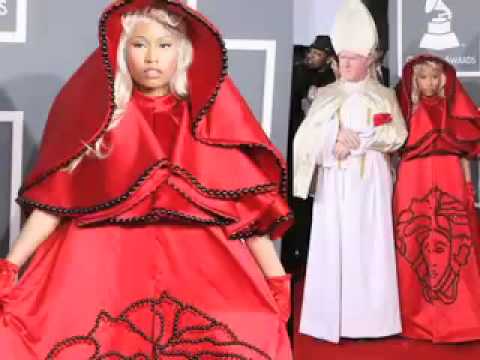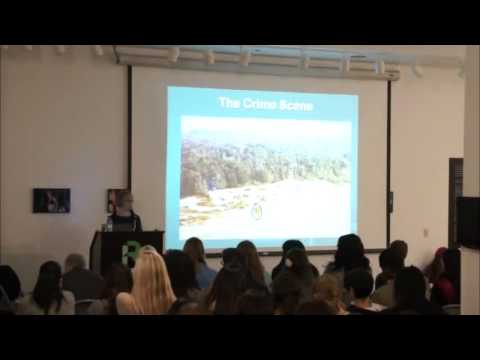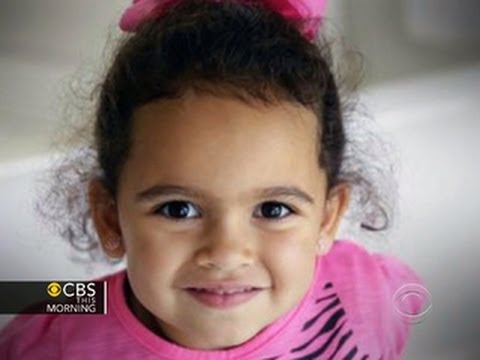10 ‘Translation: Words Will Never Hurt Me’
George Carlin had a knack for analyzing and deconstructing language. Best known for his “Seven Words You Can Never Say on Television,” Carlin also had strong opinions on euphemisms. As you’ve probably guessed, he hated them. “I don’t like words that hide the truth,” he once said. “I don’t like words that conceal reality.” Carlin believed that euphemisms were our way of dealing with the dark side of life and ignoring all the ugliness. Old people are now “senior citizens.” People don’t die; they’re “gravely ill.” The poor don’t live in slums. Instead, “the economically disadvantaged occupy substandard housing in the inner cities.” According to Carlin, this doublespeak desensitizes people to reality. So instead of worrying about soldiers suffering from “shell shock,” we turn our back on veterans with “operational exhaustion” or “post-traumatic stress disorder.” You have to admit, “PTSD” doesn’t have the same oomph as “shell shock.” But not everyone agrees with Carlin. In the eight-part episode called “Translation,” the folks at Radiolab analyze the peculiar problem of euphemisms and come to another conclusion. Instead of turning us into dumb zombies, writer Adam Gopnik thinks some euphemisms have evolved in a way that’s beneficial to society. Let’s go back to shell shock for a moment. According to Gopnik, this expression packed a punch, but it didn’t accurately describe the problem. Instead, it implied that soldiers went crazy from constant shelling, but after a few months in bed, they’d be fine. When psychologists discovered that the effects of shell shock outlasted the war, they changed the name to “battle fatigue” to explain how combat takes an extended toll on the human nervous system. As doctors learned more, the name grew longer and more complicated. Sure, it lost some of its gravitas, but it’s now more comprehensive. Post-traumatic stress disorder applies to soldiers in the middle of a war zone as well as people who’ve been out of combat for years. The term can even work for drone operators who were never actually on a battlefield. But what about other terms like “enchanted interrogation” or “collateral damage”? Are there any positive side effects to these phrases, or is just some sort of Orwellian cover-up? Maybe not all euphemisms are equal. Perhaps some are bad, some are good, and some are downright ugly.
9 ‘Oops: Weighing Good Intentions’
In this episode, Jad, Robert, and producer Lulu Miller take a look at a series of “oopses,” stupendous blunders ranging from journalistic bloopers to the destruction of an ancient tree. But we’ll focus on a sobering story that poses a rather thorny question: How much is one species worth? Years of work? Millions of dollars? A human life? The star of this story is the Kirtland’s warbler, a beautiful bird that was nearing extinction in the 1970s. Michigan researchers weren’t sure why the warbler was dying, so they turned their attention to a nasty little beast called the cowbird. These cuckoo-like critters kill the warbler’s offspring, so conservationists tried culling the local cowbird population. That stabilized the warblers, but the birds didn’t exactly bound back. Researchers realized there was a bigger problem. The warblers didn’t have anywhere to live. These birds prefer making their nests in young trees. However, humans had done such a good job of preventing forest fires that the woods were completely dominated by old pines. Without fires, new trees weren’t able to grow. So the US Forest Service started controlled burns, burning down select portions of the forest to allow saplings to pop out of the soil. This is where the story gets a little tricky. In 1980, a fire near Mack Lake got out of control, burning 20,000 acres in six hours. Tragically, Forest Service employee James Swiderski died in the flames, a death which stirred up some pointed opinions. Many of the locals felt that the life of a few birds wasn’t worth the life of a human. After all, there are many different kinds of warblers. Does this one picky species deserve our blood, sweat, and tears? On the flip side, several members of James Swiderski’s family want the warbler to survive. They even hope it will become the state bird of Michigan. After all, James dedicated his life to defending these birds. He believed they were worth the fight. As James’s brother points out, if you don’t make tough sacrifices, then nature is eventually going to disappear like so many plants, animals, and ecosystems already have.
8 ‘Straight Outta Chevy Chase’
NPR and NWA don’t usually go together, but hey, this is Radiolab. In “Straight Outta Chevy Chase,” Jad and Robert look at the history of hip-hop and ponder the question of categories. Who gets to say who’s in and who’s out? Who gets to say who belongs and who doesn’t? Attempting to answer those questions, the folks at Radiolab sat down for a chat with Peter Rosenberg, a DJ based out of New York. Growing up, Rosenberg wasn’t the kind of guy you’d expect to be a hip-hop fan. He was a white, Jewish kid from suburban Maryland. That’s not a big deal today with the likes of Macklemore and Eminem. But for a while, rap largely belonged to black and Latino fans. Rosenberg didn’t fit the expected criteria, and that’s why no one would hire him at hip-hop radio stations. But that changed when he landed a gig at Hot 97, one of the premiere hip-hop stations in America. Soon, Rosenberg was hosting two of his own shows. Over the years, he’d gone from the stereotypical outsider to the ultimate insider. He discovered new talent, championed new artists, and destroyed anyone who tried to defile the purity of hip-hop. He was a “gatekeeper,” a defender of “realness,” and that’s what led to his feud with Nicki Minaj in 2012. Rosenberg had high expectations for Minaj. He believed she could become the greatest female hip-hop artist ever. But then she released “Starships,” a poppy single that Rosenberg absolutely abhorred. It was a disgrace to his beloved genre. So at the 2012 Summer Jam festival, he slammed Minaj, ripping her song apart. When Nicki found out, she canceled her appearance at Summer Jam, and her legion of fans attacked Rosenberg online. In a showdown on Hot 97, Rosenberg and Minaj tried to hash out their differences. But the conversation just created more questions. As Minaj pointed out, she was a black woman from Queens. She’d lived the life, had the appropriate background. Rosenberg was a white kid from Maryland. Did he have the right to criticize her? And who appointed Rosenberg as the voice of hip-hop? Shouldn’t that position belong to someone like Minaj? It all leads to the final question of who’s in and who’s out. Is it someone with credentials or someone with passion?
7 ‘Cut And Run’
What does it take to become a great athlete? Practice and determination? That’s what we like to think, but what if it’s more complicated than that? What if athletic dominance is more about social pressure—and genetics? In “Cut and Run,” Jad and Robert team up with NPR reporter Gregory Warner to analyze the Kalenjin, a group of people from western Kenya who’ve produced some of the best long-distance runners on Earth. But what makes the Kalenjin so skilled? Is it their high-starch diet? Or is it because they live and train at high altitudes? Jad and Robert present two controversial theories. The first hypothesis—presented by author David Epstein—claims that when it comes to long-distance running, the Kalenjin are genetically superior to the rest of us. Their long, thin legs allow heat to quickly dissipate, and their small ankles make it easier for their legs to swing back and forth. So perhaps they’re just hardwired to excel. As you might expect, that’s a contentious theory. But what if there’s another explanation? Perhaps they’re so gifted because of their amazing ability to tolerate pain. That makes a lot of sense considering that both Kalenjin boys and girls undergo an insanely painful initiation ritual that involves . . . well . . . you’ll just have to give the episode a listen. Anyway, the initiation ritual is key to the Kalenjin way of life. If you don’t pass, you’re an outcast, so it’s important to shut up and take the pain. Since they spend most of their young lives preparing for this rite of passage, perhaps the Kalenjin have developed a mental toughness that makes other athletes pathetic in comparison. As Jad explains, this theory is a lot more encouraging for the rest of us because it implies that anyone can become great with enough determination.
6 ‘Sex, Ducks, And The Founding Feud’
This story about duck hunting and international treaties starts when a Philadelphia woman named Carol Anne Bond discovers that her husband has impregnated her best friend, Myrlinda Haynes. Understandably ticked off, Bond tried to poison her ex-friend 24 times. Fortunately, Ms. Haynes escaped each time. But when she called the cops, they ignored her. Watch this video on YouTube However, Bond made a big mistake when she slathered poison on Haynes’s mailbox. When the US Postal Service found out, they prosecuted Carol Anne, who was then charged with violating the International Chemical Weapons Treaty of 1998. After all, she’d messed around with a federal institution, with a deadly toxin no less. Naturally, her lawyers claimed the feds couldn’t prosecute a Philadelphia woman for a Philadelphia crime, and soon the case made it all the way to the US Supreme Court. Now we’ve talked about this story before, but this is where the folks at Radiolab take an interesting turn. Jad and Robert jump back to 1919 when a federal game warden arrested Missouri Attorney General Frank McAllister and friends for shooting a bunch of migrating birds. The politician was then charged with violating the Migratory Bird Treaty Act of 1918, a treaty the US signed with Canada to protect our feathered friends from extinction. Just like Mrs. Bond, the hunters protested, and the case went to Washington, where the Supreme Court sided with the game warden. After all, the Constitution says that treaties are the supreme law of the land. Fast-forward a couple of years, and the government is using the duck hunting case as a precedent to charge Carol Anne. Obviously, there are people who have a problem with this way of doing business. Even Robert calls it “sneaky.” By signing treaties, the feds could intervene in any state matter they wanted to. On the other hand, the government needs these treaty powers to protect the nation and fix worldwide problems. As Jad asks, how can you deal with global situations like climate change if there aren’t any international laws we all have to abide by? As for Carol Anne Bond, the Supreme Court decided she didn’t violate the Chemical Weapons Treaty, but they didn’t address whether the feds could use treaties to prosecute crimes. So if your spouse is cheating, stay away from the mailbox.
5 ‘Grumpy Old Terrorists’
In this episode, Jad and Robert focus on a small group of homegrown US terrorists who planned on blowing up a federal building in Atlanta, not to mention releasing ricin in several states along the eastern seaboard. Fortunately, they were caught trying to buy explosives, but there’s something odd about this particular bunch. Watch this video on YouTube They were all senior citizens. The elderly leader of these would-be bombers was Fred Thomas, a navy veteran worried about America’s future. Fed up with Big Brother, Thomas spent his free time chatting with his retired buddies, complaining about Obama, and threatening to kill people. Lots of people. But Thomas didn’t know there was a traitor in his midst, an FBI informant recording all his conversations. This is where things get complex. Yes, Thomas and his friends were caught saying things like, “I could shoot ATF and the IRS all day long.” But were they credible threats? Several of these guys were in their seventies, and they weren’t exactly healthy. Most importantly, they didn’t have the money to fund their vendetta. That is, until the undercover agent offered to chip in. Not only did he fork over federal money to buy the necessary weapons, he offered to hook Thomas up with an arms dealer. After SWAT crashed the party, the grumpy old terrorists were tossed behind bars. Of course, this begs some thorny questions. Would Fred and his friends have gone through with their plans if the FBI hadn’t offered to help? At what point does talking about a crime actually become a crime? When should the government act if they suspect a terrorist attack? Most importantly, do you feel any safer after hearing this story? The folks at Radiolab are split down the middle.
4 ‘Reasonable Doubt’ And ‘Outside Westgate’
“Reasonable Doubt” and “Outside Westgate” tackle two different topics: a rape in Wisconsin and a terrorist attack in Nairobi. But despite the different crimes and locales, both episodes deal with a similar theme. How trustworthy are our memories? “Reasonable Doubt” centers on a Wisconsin woman named Penny Beernsten. One day in 1985, she was jogging by Lake Michigan when she was attacked and raped. During the assault, she tried to memorize the man’s features so she could identify him. A few hours later, she was brought into a police station and experienced a “visceral gut reaction” when she spied her assailant in a lineup. The man’s name was Steven Avery, an ex-con with a checkered past. Penny was 100 percent sure this man was her attacker, and Avery was soon behind bars. But 18 years later, DNA evidence proved that Avery was innocent. The real criminal was Gregory Allen. But when she saw Allen, she didn’t feel anything. She couldn’t remember having ever seen him. But even though she knew Avery was innocent, she still had nightmares about him and felt terror whenever she thought of his name. After Avery was released from prison, Penny met with him and apologized for what she’d done. Afterward, things took an unexpected turn (which you can hear about in the episode; Avery’s story is also the focus of Netflix’s documentary series Making a Murderer), but the entire affair left Penny questioning her own judgment. In “Outside Westgate,” we hear about a group of terrorists who attacked the Westgate Mall in Kenya in September 2013. People were trapped inside the mall for four days. When they finally escaped, they claimed there were 10–15 terrorists inside. Many people said the group was made up of multiple ethnicities (Somali, Kenyan, and Arab). Some claimed that one of the terrorists was a woman, and others were sure that one of the killers had slipped out with the crowd. After the government closed its official investigation, it was revealed that there were only four terrorists—all Somali, all male, and all accounted for. Despite the overwhelming evidence, including thousands of hours of security footage, the victims continued to stick to their stories. The video recordings said one thing, but their memories said something completely different. This brings us back to that central question: How can you trust anything if you can’t trust your own senses?
3 ‘Adoptive Couple v. Baby Girl’
This story starts with a pregnant woman named Christy Maldonado who put her baby up for adoption. A South Carolina couple, Melanie and Matt Capobianco, became the little girl’s adoptive parents and named her Veronica. Dusten Brown, Veronica’s biological dad, was a soldier fighting in Iraq. Before he went overseas, he signed away his parental rights (not knowing that Christy was planning to put the girl up for adoption). Two years later, Dusten Brown returned home. He wanted his baby back, and even though he had signed away his rights, Veronica was taken from the Capobiancos. Dusten Brown is a member of the Cherokee Nation, so he invoked a law called the Indian Child Welfare Act to get his daughter back. This federal law was enacted in 1978 to prevent the breakup of Native American families. During the 1950s and ’60s, Native American children were often placed with white families because the US government and social workers wanted to end Native American sovereignty and their way of life. The Indian Child Welfare Act contained strict rules about who could and couldn’t adopt Native American children. A member of the immediate family had primary adoption rights. If no one volunteered, the child could be adopted by someone else in the tribe, followed by any other Native American family. If those options didn’t work out, the child could be adopted by non–Native American parents. According to this legislation, Veronica belonged with Dusten Brown. Years of litigation led to a showdown in the Supreme Court. But during all the insanity, people were debating some serious issues. If the Indian Child Welfare Act was meant to keep families together, should it be used to tear them apart? Was a race-based law even constitutional? Should the justice system ignore a law for one family and jeopardize an entire group of people? And if the Supreme Court ruled against Dusten Brown, what would that mean for every other Native American law in the US? Dusten Brown lost his case, which is also covered in a second Radiolab episode entitled “Ally’s Choice.” Whether or not you think it’s a happy ending will depend on how you feel about Native American law, US history, and whether one person should suffer for the greater good.
2 ‘Birthstory’
“Birthstory” opens with Tal and Amir, a gay Israeli couple, who want to start a family. Since surrogacy for gay couples is illegal in Israel, Tal and Amir turned to Lotus, one of many companies that help gay couples find surrogates in countries from the US to Thailand. In Tal and Amir’s case, they were set up with two Indian women. However, India outlawed surrogacy for gay couples in 2013. It was illegal in Nepal as well but only for Nepalese women. So these Indian surrogates traveled to Kathmandu, where they were implanted with embryos. The sperm belonged to Tal and Amir, respectively, and the eggs belonged to a Ukrainian woman. Tal and Amir only agreed to use surrogates because they thought these women would receive around $12,000, a life-changing sum of money. However, after the women gave birth, the Israeli couple learned that other surrogates had only received a few thousand dollars. Worried that their surrogates were being shortchanged, they teamed up with Israel Story and Radiolab to track down the surrogates and find out how much they had been paid. Although they never found the actual surrogates, Radiolab did track down several other women and learned that most surrogates are paid around $5,000. Most of the $12,000 paid by Tal and Amir had gone to middlemen who helped to move the women around, set them up in shelters, do all the necessary paperwork, etc. The surrogates only received the bulk of their money if they actually carried the baby to term. If they miscarried, the deal was off. This has stirred up quite a bit of controversy. In fact, Nepal recently banned all surrogacy, and countries like Canada and Cambodia might implement some strict laws to prevent exploitation. But as Radiolab points out, these surrogates knew what they were getting into. Many of these women earn less than $100 a month, so $5,000 is an impressive sum. It might allow them to buy land, build a house, or pay for a daughter’s dowry. Are women being cheated and exploited? Should this kind of business be shut down? Or is that infringing on a woman’s right to choose what to do with her own body? Is this a legitimate way to provide for their families? As Jad says, it’s “troubling” and “unfair,” but there’s also a “benefit” for women without other options.
1 ‘Inheritance: What If There Was No Destiny?’
In our final Radiolab episode, producer Pat Walters takes a trip to North Carolina to interview Barbara Harris. To some, Harris is a hero on a noble crusade. To others, she’s a danger to society. But before we can talk about her incredibly odd mission, we need to talk about her adopted daughter, Destiny. Destiny’s biological mother was a serious drug addict who abandoned her daughter at the hospital. Tragically, Destiny tested positive for PCP, crack, and heroin when she was born. Doctors feared that she would be physically and mentally delayed for the rest of her life, but Barbara adopted the little girl anyway. In fact, Barbara adopted four children from the same birth mother, a junkie who left her kids behind. This infuriated Barbara, who started thinking about all the other kids forced to grow up in a living hell with druggie parents. So Barbara launched Project Prevention, an organization that pays drug-addicted women to receive IUDs or undergo sterilization. If a woman agrees to use birth control, Barbara will fork over $300. At the time of the episode’s release, Project Prevention had paid over 4,000 women. Many people supported Barbara, believing her organization was saving kids from a life of pain and suffering. However, many think Project Prevention is taking advantage of drug-addicted women at their weakest moment. Critics also point out that many of these women will use their money to buy more drugs and that Barbara’s ideology is dangerously close to that of the eugenics movement. In response, Barbara says she’s saved numerous lives from abuse and homelessness. She’s so dedicated that she’s opened up a clinic in the UK and is paying men to undergo vasectomies. Although Pat Walters understands Barbara’s reasoning, he points to an obvious flaw in her argument—Destiny. Despite what doctors initially believed, Destiny has grown up just fine. In 2012, she was about to graduate from college and was the proud mother of a little girl. But when Walters asks Destiny if she would risk being born into a drug-addicted family or if she would choose to never be born at all, Destiny picks the latter: “I wouldn’t want to put it up to chance because what kind of life is that?” Nolan Moore is a writer and editor from Texas. If you want, you can friend/follow him on Facebook, or send him an email.
























